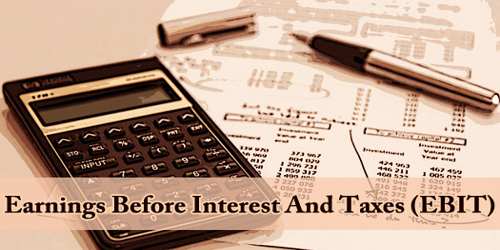Earnings Before Interest and Taxes (EBIT) is one of the last subtotals in the before-net income statement. EBIT is a calculation of a company’s income, which includes both sales and expenditures (operating and non-operating) except interest and tax expenditures. This is often referred to as revenue from operations, gross income, and income before interest and tax.
Also known as operating income is EBIT since both exclude interest and taxes from their calculations. There are however cases where operating income can vary from EBIT. Dividing EBIT by sales revenue shows us the percentage operating margin (e.g., 15 percent operating margin). The margin are often compared to the firm’s past operating margins, the firm’s current net income margin, and ratio, or to the margins of other, similar firms operating within the same industry.
EBIT Formula:
EBIT = Net income + Interest + Taxes = EBITDA – Depreciation and Amortization expenses
Operating income = operating revenue – operating expenses (OPEX) = EBIT – non-operating profit + non-operating expenses
The EBIT measurement takes the production costs of a product including raw materials and direct operating expenditures, which include wages for workers. These items, and subtracted from revenue afterward. Earnings before interest and taxes are often used as a proxy at no cost income in some industries it works well as long as it’s applied to stable, mature companies with relatively consistent capital expenditures. The EBIT metric is closely tied to free income (FCF).
A professional investor contemplating a change in a company’s capital structure (e.g. through a leveraged buyout) first assesses the fundamental earnings potential of a company and then determines the optimum use of debt vs. equity. By ignoring taxes and interest expenses, EBIT focuses solely on the ability of a company to generate operating income, by ignoring variables such as the tax burden and capital structure.
For two reasons, investors use Earnings Before Interest and Taxes (EBIT): (1) it is easy to calculate, and (2) it makes companies easily comparable. EBIT is an especially useful metric because it helps to spot a company’s ability to come up with enough earnings to be profitable, pay down debt, and fund ongoing operations. It’s very easy to calculate using the earnings report, as earnings, interest, and taxes are always broken out.
The EBIT standardizes earnings for the capital structure of the company (by adding back interest expenses) and the tax regime under which it falls. Expenses (e.g. the cost of goods sold, sales, and administrative expenses) are subtracted from revenues to calculate the EBIT. Net income is later extracted from the profit by subtracting interest and taxes. The reasoning here is that a business owner could adjust his capital structure (thus normalizing for that) and move his headquarters to a location under a special tax regime. Whether or not these are realistic assumptions may be a separate issue but, in theory, they’re both possible.
Nevertheless, EBIT excludes from the study the advantages of tax cuts. EBIT is useful when investors compare two firms in the same industry but with different tax rates. EBIT is that the money retained by the firm before deducting the cash to be obtained taxes, and it excludes the money procured interest. Also, EBIT helps investors analyze the operating performance and earnings potential of companies while eliminating debt and the resulting interest expense.
Information Sources:
















